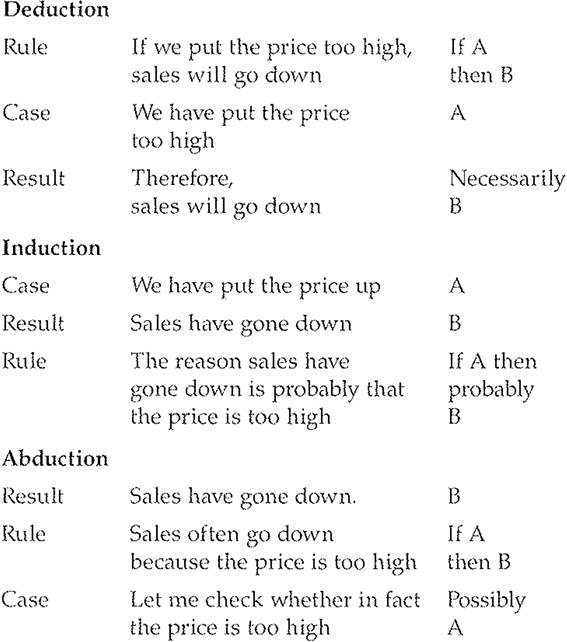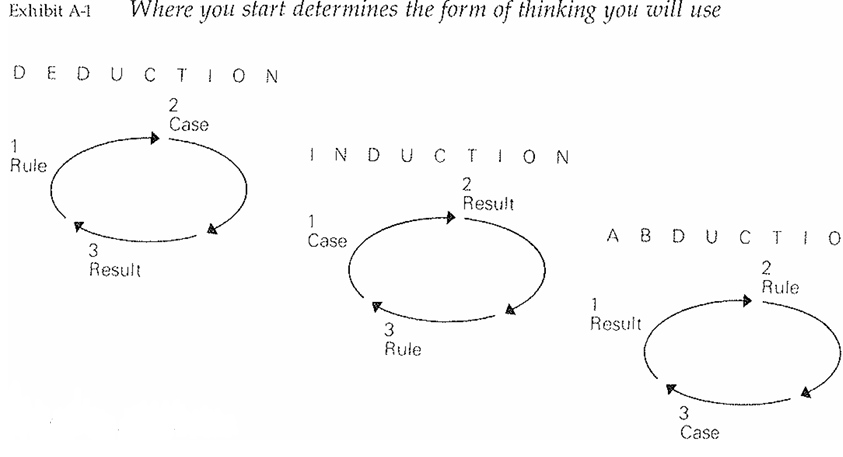


 Grammar
Grammar
 Tenses
Tenses
 Present
Present
 Past
Past
 Future
Future
 Parts Of Speech
Parts Of Speech
 Nouns
Nouns
 Verbs
Verbs
 Adverbs
Adverbs
 Adjectives
Adjectives
 Pronouns
Pronouns
 Pre Position
Pre Position
 Preposition by function
Preposition by function 
 Preposition by construction
Preposition by construction
 Conjunctions
Conjunctions
 Interjections
Interjections
 Grammar Rules
Grammar Rules
 Linguistics
Linguistics
 Semantics
Semantics
 Pragmatics
Pragmatics
 Reading Comprehension
Reading Comprehension|
Read More
Date: 2024-09-27
Date: 2024-09-13
Date: 2024-09-09
|
C. S. Peirce's insight was that in any reasoning process you always deal with three distinct entities:
1. A Rule (a belief about the way the world is structured)
2. A Case (an observed fact that exists in the world)
3. A Result (an expected occurrence, given the application of the Rule in this Case).
The way in which you can consider yourself to be reasoning at any one time is determined by where you start in the process and what additional fact you know. To illustrate the differences:

We have been saying throughout that analytical problem solving consists of noticing an Undesirable Result, looking for its cause in our knowledge of the structure of the situation (Rule) and testing whether we have found it (Case). You can see that this exactly matches the Abductive reasoning process shown above.
Even though Abduction is different from Induction and Deduction-and it is important to note the difference-they are also closely related. Thus, in any complex problem-solving situation you are likely to be using all three forms of reasoning in rotation. As I said earlier, the form you are using, and the results you can expect from it, depend on where you start in the process (Exhibit A-1).

|
|
|
|
للعاملين في الليل.. حيلة صحية تجنبكم خطر هذا النوع من العمل
|
|
|
|
|
|
|
"ناسا" تحتفي برائد الفضاء السوفياتي يوري غاغارين
|
|
|
|
|
|
|
نحو شراكة وطنية متكاملة.. الأمين العام للعتبة الحسينية يبحث مع وكيل وزارة الخارجية آفاق التعاون المؤسسي
|
|
|